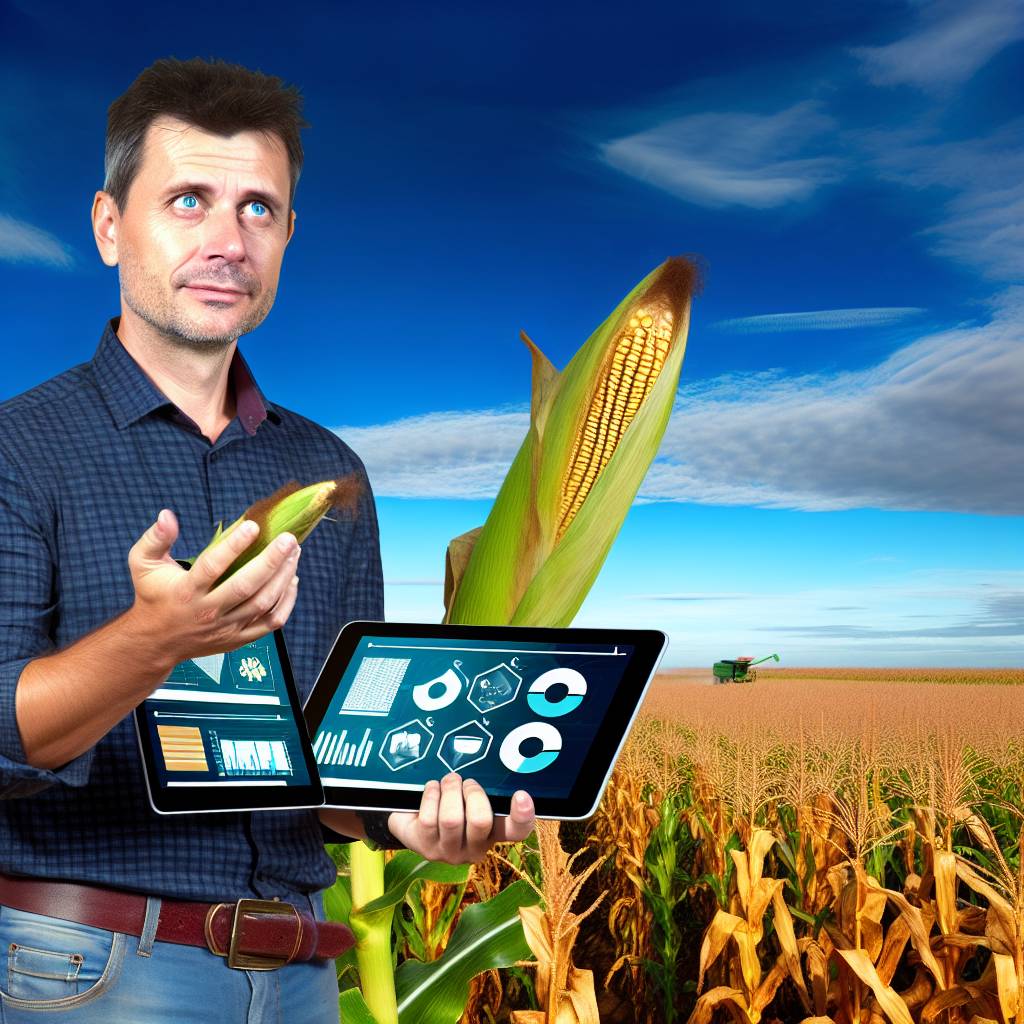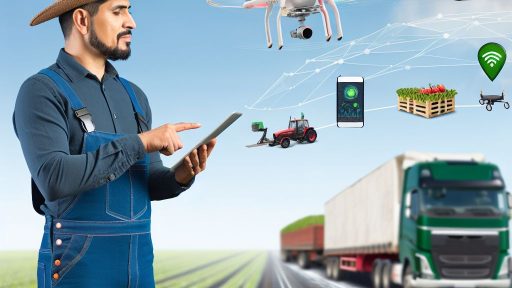Introduction to Digital Finance Tools in Agriculture
Digital finance tools revolutionize the agricultural sector.
They provide farmers with access to financial services.
These tools enhance the overall productivity of farming.
Furthermore, they simplify transactions and improve resource management.
Enhancing Financial Accessibility
Farmers often struggle with limited access to traditional banking.
Digital finance tools bridge this gap effectively.
Mobile banking apps enable instant transactions from anywhere.
Similarly, online lending platforms provide quick funding solutions.
Improving Financial Literacy
Education plays a crucial role in utilizing digital finance tools.
Many organizations offer training to enhance financial literacy.
Farmers learn to manage funds responsibly through these programs.
Increased literacy leads to better decision-making regarding investments.
Streamlining Supply Chain Management
Digital finance tools streamline agricultural supply chains.
Farmers can track purchases, sales, and inventory more efficiently.
This capability minimizes waste and ensures timely deliveries.
Transform Your Agribusiness
Unlock your farm's potential with expert advice tailored to your needs. Get actionable steps that drive real results.
Get StartedMoreover, it allows producers to negotiate better prices.
Facilitating Access to Insurance
Insurance is vital for risk management in agriculture.
Digital platforms make it easier to obtain agricultural insurance.
Farmers can compare policies and choose the best fit.
This accessibility reduces the financial impact of crop failures.
Leveraging Data for Better Outcomes
Digital finance tools harness data analytics for improvement.
Farmers can monitor market trends and consumer preferences.
This information guides planting and harvesting decisions.
Consequently, they can optimize production and profitability.
Understanding the Role of Digital Finance in Enhancing Productivity
The Rise of Digital Finance in Agriculture
Digital finance tools have revolutionized the agricultural sector.
These tools provide farmers with better access to financial resources.
As a result, farmers can invest in essential technologies and practices.
Consequently, agricultural productivity increases significantly.
Access to Capital
Digital finance improves access to capital for farmers.
Many smallholder farmers struggle to secure loans from traditional banks.
However, digital lending platforms offer quick and flexible loans.
These platforms often require minimal documentation and credit checks.
Farmers can use these loans to purchase seeds, fertilizers, and equipment.
Financial Literacy and Training
Financial literacy is crucial for effective use of digital finance tools.
Many agricultural programs offer training to improve financial skills.
Farmers learn how to manage their finances wisely and plan for the future.
Good financial practices lead to better decision-making.
As a result, farmers can optimize their production processes.
Data-Driven Decision Making
Digital finance tools provide valuable data for farmers.
Showcase Your Farming Business
Publish your professional farming services profile on our blog for a one-time fee of $200 and reach a dedicated audience of farmers and agribusiness owners.
Publish Your ProfileThis data helps farmers analyze their operations effectively.
For example, farmers can track expenses and revenues more accurately.
This insight leads to informed decision-making regarding investments.
Ultimately, farmers can enhance efficiency and boost yields.
Enhancing Supply Chain Management
Digital finance tools streamline supply chain management in agriculture.
Farmers can easily connect with suppliers and buyers through these tools.
This connectivity reduces delays and inefficiencies in the supply chain.
Moreover, farmers can negotiate better prices for their products.
In turn, improved supply chain management enhances overall productivity.
Ensuring Risk Management
Digital finance provides mechanisms for better risk management.
Farmers can access insurance products tailored for agricultural needs.
These products protect farmers against crop failures and market fluctuations.
By reducing risks, farmers can focus on maximizing their productivity.
Consequently, resilient farms contribute positively to the economy.
Key Digital Finance Tools for Farmers: An Overview
Mobile Banking Applications
Mobile banking applications provide farmers with access to financial services anytime and anywhere.
These applications allow users to manage their accounts effortlessly.
Additionally, farmers can conduct transactions swiftly and securely using their smartphones.
Digital Payment Systems
Digital payment systems streamline transactions for farm purchases.
Farmers can easily pay suppliers or receive payments from buyers digitally.
This method reduces the time and hassle associated with traditional payment methods.
Farm Management Software
Farm management software helps farmers track their operations and finances efficiently.
These tools provide insights into crop yields, expenses, and revenue.
Ultimately, they facilitate better decision-making and planning.
Online Lending Platforms
Online lending platforms offer farmers quick access to necessary funds.
These platforms typically feature simpler application processes compared to banks.
Farmers can secure loans tailored to their specific agricultural needs.
Blockchain Technology
Blockchain technology enhances transparency in the agricultural supply chain.
Farmers can track their products from field to market securely.
This technology also helps in verifying transactions and ensuring authenticity.
Insurance Automation Tools
Insurance automation tools simplify the process of purchasing agricultural insurance.
Farmers can receive tailored insurance options based on their unique risks.
This convenience allows them to protect their investments more effectively.
Data Analytics Platforms
Data analytics platforms provide actionable insights from agricultural data.
Farmers can identify trends and make informed decisions regarding crop management.
These insights can significantly improve productivity and profitability.
Uncover the Details: Maintenance Tips For Agricultural Automated Machinery
Improving Access to Credit through Digital Platforms
Expanding Financial Inclusion
Digital finance tools significantly enhance financial inclusion for farmers.
More farmers can access credit through mobile banking services.
These services enable quick applications and approvals for loans.
As a result, agricultural productivity often increases with easier access to funds.
Showcase Your Farming Business
Publish your professional farming services profile on our blog for a one-time fee of $200 and reach a dedicated audience of farmers and agribusiness owners.
Publish Your ProfileStreamlining the Loan Application Process
Digital platforms simplify the loan application process for users.
Farmers can submit applications from their homes using mobile devices.
This convenience reduces the time spent traveling to banks.
Moreover, the digital process often requires fewer documents.
Transparency in the loan conditions promotes trust between lenders and farmers.
Utilizing Data for Credit Scoring
Advanced algorithms analyze data to assess creditworthiness effectively.
Digital platforms use agricultural history and local market conditions for assessments.
As a result, even farmers with no formal credit history qualify for loans.
This data-driven approach mitigates risks for lenders.
Consequently, it fosters a sustainable lending environment.
Increasing Availability of Microloans
Digital finance solutions offer the possibility of microloans for small farmers.
Microloans cater to those who need smaller amounts of capital.
Additionally, flexible repayment options reduce the burden on farmers.
This model empowers them to invest in upgrades and inputs.
Ultimately, microloans can lead to enhanced yields and profitability.
Building Digital Literacy
To fully leverage these tools, digital literacy is crucial.
Training programs can help farmers navigate digital platforms effectively.
Furthermore, workshops on finance management can enhance their skills.
As farmers become more tech-savvy, they can make informed financial decisions.
This knowledge leads to better investment choices and improved productivity.
Learn More: Benefits Of Drones For Precision Agriculture
Utilizing Mobile Payment Solutions for Seamless Transactions
The Significance of Mobile Payment Solutions
Mobile payment solutions play a vital role in modern agriculture.
They simplify transactions between buyers and sellers.
These tools offer convenience in payment processing.
Farmers can receive payments instantly, enhancing cash flow.
Benefits for Farmers
Mobile payments reduce the need for physical cash exchanges.
This minimizes the risk of theft and loss.
Farmers also benefit from increased transaction speed.
They can spend less time waiting for payments to clear.
Improving Access to Markets
Mobile payment solutions expand market reach for farmers.
These solutions connect them to a wider customer base.
Farmers can sell directly to consumers in urban areas.
This boosts profitability and enhances customer relationships.
Enhancing Financial Management
Mobile applications allow farmers to track their finances easily.
They can monitor sales and review spending patterns.
This data helps farmers make informed financial decisions.
Ultimately, effective management boosts agricultural productivity.
Overcoming Barriers to Adoption
Some farmers hesitate to adopt mobile payment solutions.
Education and training can address these concerns.
Workshops can demonstrate how to use these tools effectively.
Showcase Your Farming Business
Publish your professional farming services profile on our blog for a one-time fee of $200 and reach a dedicated audience of farmers and agribusiness owners.
Publish Your ProfileGovernment incentives can further encourage adoption among farmers.
Empowering Farmers with Mobile Payments
By embracing mobile payment solutions, farmers can transform transactions.
These tools empower farmers to manage finances better.
They ultimately lead to enhanced agricultural productivity.
See Related Content: Autonomous Machinery In Modern Farming
Data Analytics for Informed Decision-Making in Farming
Enhancing Crop Management
Data analytics empowers farmers to make better crop management decisions.
By analyzing weather patterns, farmers can optimize planting schedules.
Additionally, data can help determine the best varieties for specific conditions.
As a result, farmers can improve yield and reduce waste.
Optimizing Resource Usage
Effective data analytics leads to more efficient resource usage.
Farmers can track water usage and soil health through digital tools.
This information allows them to optimize irrigation and fertilizer applications.
Consequently, they can minimize costs while maximizing productivity.
Risk Management Strategies
Data analytics also plays a critical role in risk management.
Farmers can analyze historical data to identify potential risks.
This insight enables them to implement proactive measures against pests and diseases.
Furthermore, they can adjust insurance policies based on data-driven insights.
Market Analysis and Pricing
Understanding market trends is vital for farmers’ financial success.
Data analytics provides insights into pricing fluctuations and demand patterns.
Farmers can use this information to make informed sales decisions.
Ultimately, they can maximize profits while ensuring sustainability.
Building a Data-Driven Culture
To fully leverage data analytics, farmers need to cultivate a data-driven culture.
This involves training staff on data collection and analysis techniques.
Investing in digital tools is essential for effective data management.
By fostering this culture, farms can adapt to changing conditions more readily.
See Related Content: Integrating Controlled Environment Agriculture into Traditional Farming

Case Studies: Successful Implementation of Digital Finance in Agriculture
Transforming Farmer Access to Capital
In India, a digital finance platform called Kiva has made significant strides.
This service connects farmers directly with micro-lenders around the world.
As a result, farmers can access the funds they need with ease.
One farmer, Anjali Patel, successfully expanded her organic farm using Kiva loans.
Consequently, she increased her yield and income significantly within one season.
Improving Supply Chain Management
In Africa, the company Twiga Foods has revolutionized supply chains.
This platform uses digital finance tools to connect farmers and consumers directly.
Farmers receive immediate payments upon delivery of their goods.
Furthermore, this approach reduces waste and enhances income for farmers.
As a result, farmers like Samuel Anyango have experienced improved financial stability.
Enabling Efficient Farm Operations
The startup AgroStar in India has leveraged technology to benefit farmers.
Its app provides access to essential inputs like seeds and fertilizers on credit.
Moreover, farmers receive tailored advice to optimize their purchases.
Consequently, they can make informed decisions that enhance productivity.
Showcase Your Farming Business
Publish your professional farming services profile on our blog for a one-time fee of $200 and reach a dedicated audience of farmers and agribusiness owners.
Publish Your ProfileAs a case in point, farmer Ramesh Kumar increased his crop yield by 40%.
Fostering Financial Literacy Among Farmers
In Nigeria, the initiative FarmCredibly aims to enhance financial literacy.
Farmers participate in workshops that teach effective financial management skills.
Additionally, they learn how to best utilize digital finance tools.
This approach has greatly improved the farmers’ understanding of credit options.
Thus, they are making more sound financial decisions, leading to growth.
Enhancing Market Access Through Digital Platforms
In the Philippines, the platform AgriMarketplace has transformed market access.
Farmers can now sell their produce directly to consumers online.
This platform ensures timely payments, increasing farmers’ confidence.
As a result, farmers like Liza Reyes have expanded their customer base significantly.
Ultimately, this leads to higher income and sustainable practices.
Challenges and Solutions in Adopting Digital Finance Tools
Understanding the Key Challenges
Many farmers face barriers when adopting digital finance tools.
Access to technology remains a significant hurdle.
Various rural areas lack reliable internet connectivity.
Consequently, farmers cannot fully utilize digital resources.
Additionally, farmers often lack financial literacy.
This limitation affects their ability to manage digital tools effectively.
Another challenge is the high costs associated with these technologies.
Smallholder farmers may struggle with initial investments.
Furthermore, resistance to change often hampers adoption.
Traditional practices can be deeply ingrained among farmers.
Solutions to Overcome Challenges
Addressing these challenges requires comprehensive strategies.
First, expanding internet infrastructure is essential.
Investment in connectivity boosts access to digital platforms.
Second, educational programs can enhance financial literacy.
Workshops and online courses will empower farmers.
Moreover, introducing subsidized tools can alleviate cost concerns.
Government partnerships with tech companies can provide solutions.
Creating user-friendly platforms encourages widespread adoption.
It is vital to involve farmers in the development process.
Fostering Community Engagement
Community support plays a crucial role in the adoption process.
Building collaborations among local farmers can enhance understanding.
Peer-to-peer learning can foster a supportive environment.
Furthermore, involving local leaders can increase trust in new methods.
Lastly, regular feedback can improve tool relevance and usability.
Future Trends: The Evolution of Digital Finance in the Agricultural Sector
The Rise of Mobile Banking Solutions
Mobile banking is transforming agricultural finance significantly.
Farmers now access financial services through smartphones.
This technology improves financial literacy among rural communities.
Additionally, it offers convenient transaction capabilities.
Blockchain Technology and Transparency
Blockchain enhances transparency in agricultural transactions.
Showcase Your Farming Business
Publish your professional farming services profile on our blog for a one-time fee of $200 and reach a dedicated audience of farmers and agribusiness owners.
Publish Your ProfileIt helps trace the supply chain effectively.
This technology builds trust between producers and consumers.
Moreover, smart contracts streamline payment processes.
Artificial Intelligence in Financial Decision-Making
Artificial intelligence is revolutionizing financial analysis in agriculture.
AI tools provide personalized financial advice to farmers.
These tools analyze data for informed decision-making.
Consequently, they help optimize resource allocation.
Peer-to-Peer Lending Platforms
Peer-to-peer lending is gaining traction in agriculture.
These platforms connect farmers directly with investors.
This model offers competitive interest rates compared to traditional banks.
Farmers gain immediate access to necessary capital.
Integration of IoT and Financial Tools
The Internet of Things (IoT) integrates seamlessly with financial services.
Connected devices provide real-time data on crop conditions.
This data assists in risk assessment and financial planning.
Consequently, farmers can make proactive financial decisions.
Future Prospects for Digital Finance in Agriculture
As technology evolves, digital finance will further shape agriculture.
Farmers will leverage more sophisticated financial tools.
Consequently, productivity and sustainability will improve.
The agricultural sector will continue to adapt to market changes.
Additional Resources
Forum on China-Africa Cooperation Beijing Action Plan (2025-2027 …
Leveraging digital platforms to promote food security and …




